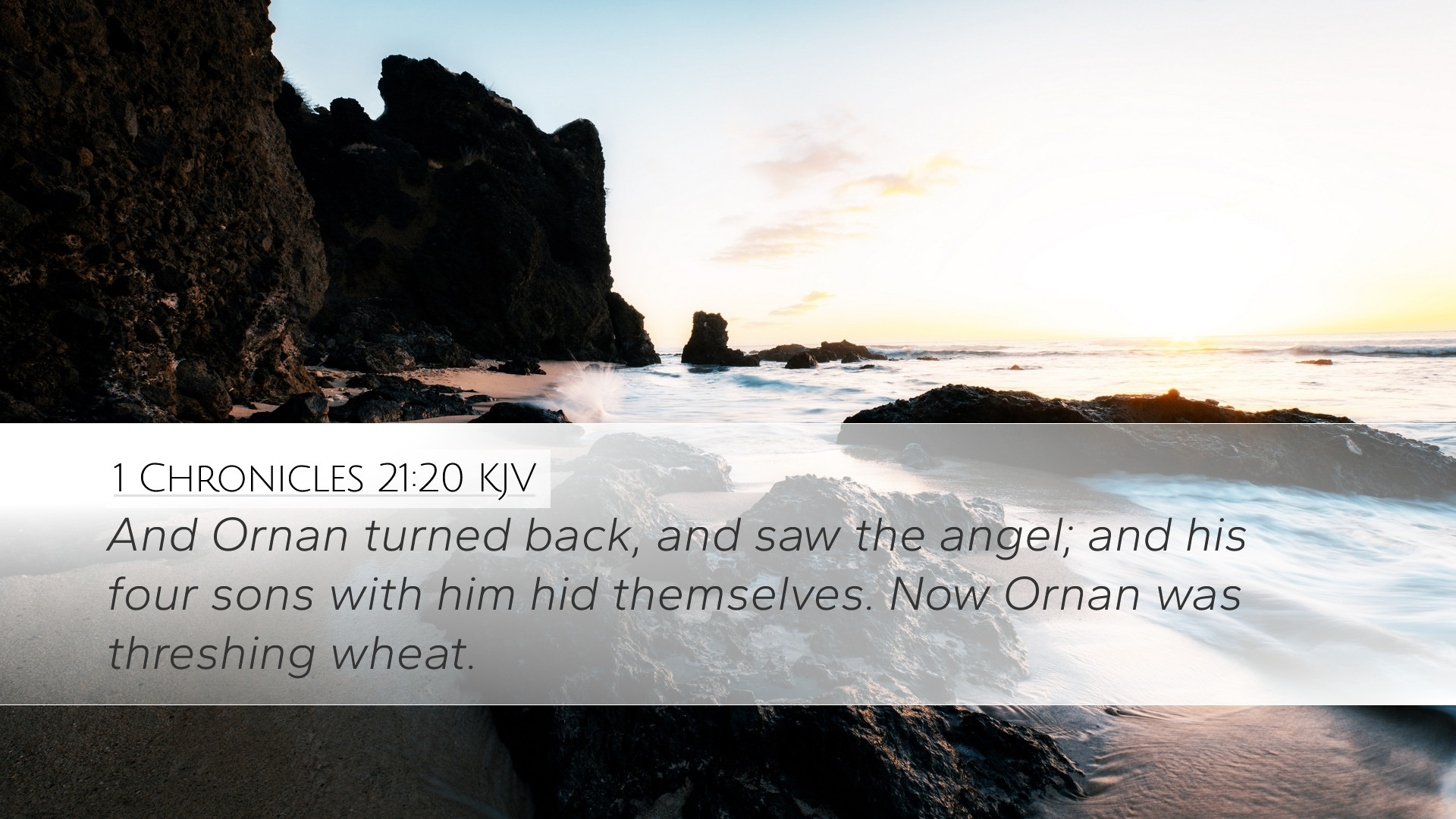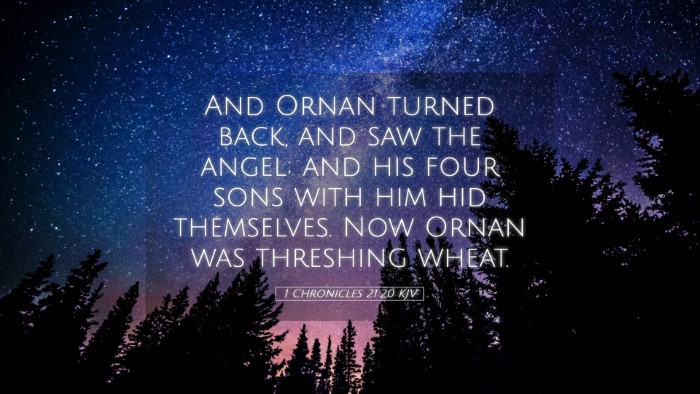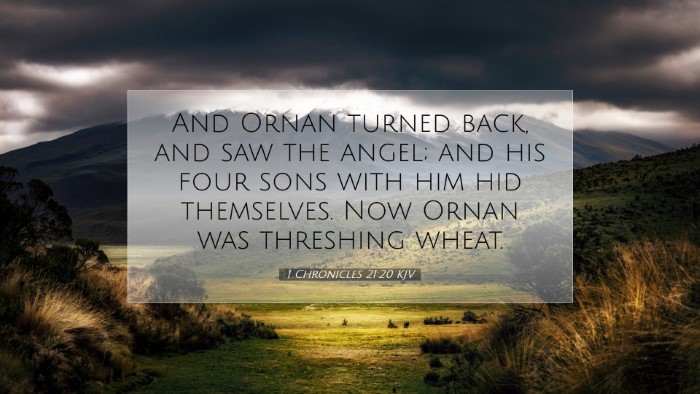Commentary on 1 Chronicles 21:20
Verse: "And Ornan turned back, and saw the angel; and his four sons with him hid themselves. Now Ornan was threshing wheat." (1 Chronicles 21:20)
Contextual Overview
This verse takes place within the narrative surrounding King David’s census of Israel, which was a significant act of disobedience before God. The consequences of this action prompted a divine judgment that resulted in a plague. It sets the stage for the moment when David encounters the angel of the Lord at the threshing floor of Ornan (also known as Araunah), leading to a pivotal moment in Israel’s history.
Insights from Matthew Henry
Matthew Henry highlights Ornan's reaction to the angel's presence, indicating the fear that gripped him and his sons. They hid themselves, demonstrating a natural human response to divine encounters. Henry observes that Ornan’s location—threshing wheat—symbolizes a time of labor, preparation, and future yield, contrasting the devastating judgment happening at that moment.
Henry further expounds on this account by noting that the appearance of the angel at a moment when Israel was experiencing calamity shows the grace of God intervening in human affairs. Ornan’s role as a humble threshing floor owner becomes significant as he is brought into the divine narrative that leads to the enduring site of the future temple.
Insights from Albert Barnes
Albert Barnes addresses the significance of Ornan's fear. He mentions that fear is a powerful theme throughout scripture in encounters with the divine. Barnes articulates that the divine presence is often accompanied by a sense of awe and dread, affirming God’s holiness in stark contrast to human frailty.
Additionally, Barnes points to the idea that Ornan’s response serves as a foil to David’s eventual recognition of God’s mercy and providence. This recognition is crucial as David wrestles with his guilt and takes steps to offer sacrifices, thus leading to the establishment of the altar at that specific site, which later becomes the location of Solomon's Temple.
Insights from Adam Clarke
Adam Clarke brings to light Ornan's character and status. Clarke emphasizes that Ornan was not a powerful man, yet he becomes central to God’s plans. This starkly illustrates the biblical principle that God often uses the weak and humble to fulfill His purposes. Clarke notes that thrashing wheat implies a provisionary aspect, where God meets community needs even amidst judgment.
Clarke also discusses the implications of Ornan’s actions, noting that the angel's appearance led him not to despair but rather to an immediate understanding of the gravity of the situation. This signifies a call to recognize God's authority and a preparation for forthcoming changes under David’s leadership.
Theological Implications
The encounter at the threshing floor serves as a theological fulcrum in understanding God’s interactions with humanity. The fear of Ornan and his sons underscores the seriousness of divine holiness and judgment, and yet, it is within this framework that God extends grace through David's intentional sacrifice and repentance.
- Divine Presence and Human Response: The juxtaposition of Ornan's fear against David's boldness in approaching the altar reflects the multifaceted nature of human responses to divine revelation.
- Preparation for Worship: The threshing floor symbolizes a place of preparation, not only for agricultural yield but also for spiritual renewal.
- God's Mercy and Judgment: The narrative intertwines themes of judgment and mercy, illustrating that divine actions aim to bring about restoration rather than mere punishment.
Application for Pastors and Theologians
In exploring this verse, pastors and theologians are encouraged to reflect on the nature of divine encounters in their preaching and teaching. While Ornan represents the common believer, the fear exhibited prior to understanding divine intentions poses an important perspective on how the church approaches holiness.
Moreover, the significance of the threshing floor as a preparatory space symbolizes the need for congregations to cultivate environments where people are ready to encounter God in worship and repentance. Furthermore, church leaders must emphasize God’s merciful character, inviting communities to embrace both judgment and grace.
Conclusion
1 Chronicles 21:20 serves as a poignant reminder of God's sovereignty over human affairs, the holiness that warrants fear, and the grace that leads to reconciliation. Ornan's simple act of threshing wheat becomes intertwined with the fate of Israel, affirming that each believer has the potential to be part of God's larger narrative. This commentary urges deeper understanding and reverence for God’s dealings with humanity, particularly during moments of crisis and divine revelation.


